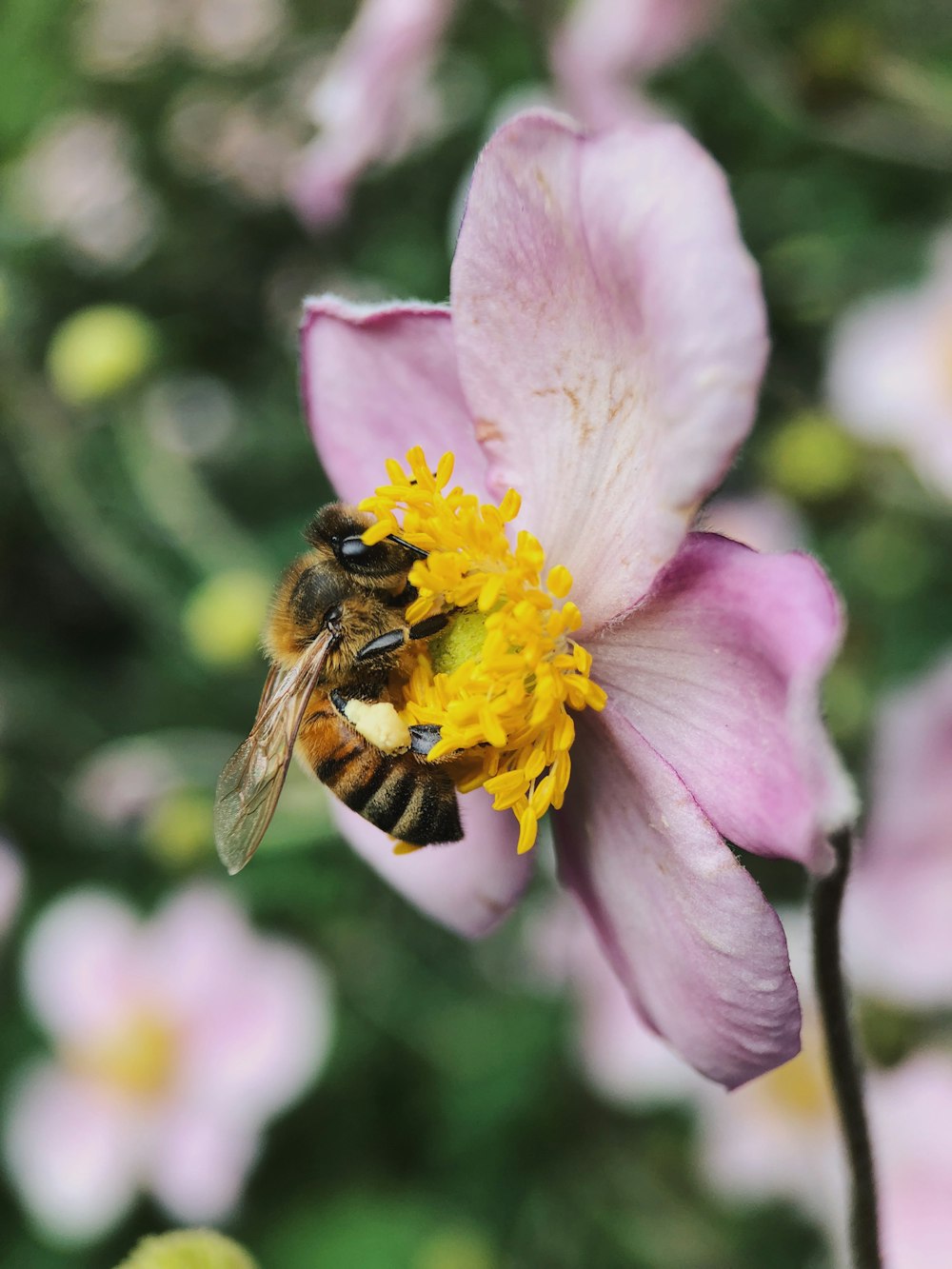When a worker honeybee egg is laid by the queen, it takes approximately 21 days to develop into a full adult bee. When it is ready to be born, the worker, in it's cell, will chew through the wax cover and immediately get working. During the first stage of her life, her job is to feed larvae, which are developing young bees. She will give them "bee bread", which is a mixture of pollen and honey. She also has the task of feeding the drones, or the males of the hive, and the queen. In her next stage, she will build more honeycomb and clean around the hive. To build honeycomb, she creates wax with glands under her abdomen. Then she shapes the wax by chewing it with her jaws to her liking.
As the worker becomes older, she will have more responsibilities for the hive, such as receiving incoming nectar from other worker bees that have been out at the blossoms and plants all day. She will also guard the hive with fellow workers from pests and predators. If there are any dead honeybees in their hive, the worker bees will remove their bodies to keep the home clean.
The most important task of a worker honeybee is pollination. Through her last stages in life, she will fly out in search of flowers that are filled with nectar. She then uses her ultra violet vision to discover flowers that have the most nectar. Next she will land on her favorite flower, and drink the nectar from that flower, which she stores in her honey sack, and her special enzymes will start to transform it into honey. As she drinks from the flower, she is also collecting the pollen from that flower, and it sticks to all of the little hairs on her body. When she is done at that flower, she will then move to a next one, and the pollen from the first flower will brush off of her body on to the new flower. This process is pollination, and it fertilizes the plants to help them produce healthily.


No comments:
Post a Comment
Thank you for your comment/question! We are busy buzzing across American spreading the sweet news about honey and beekeeping, but we will do our best to respond in the next 24 hours. We appreciate your patience!